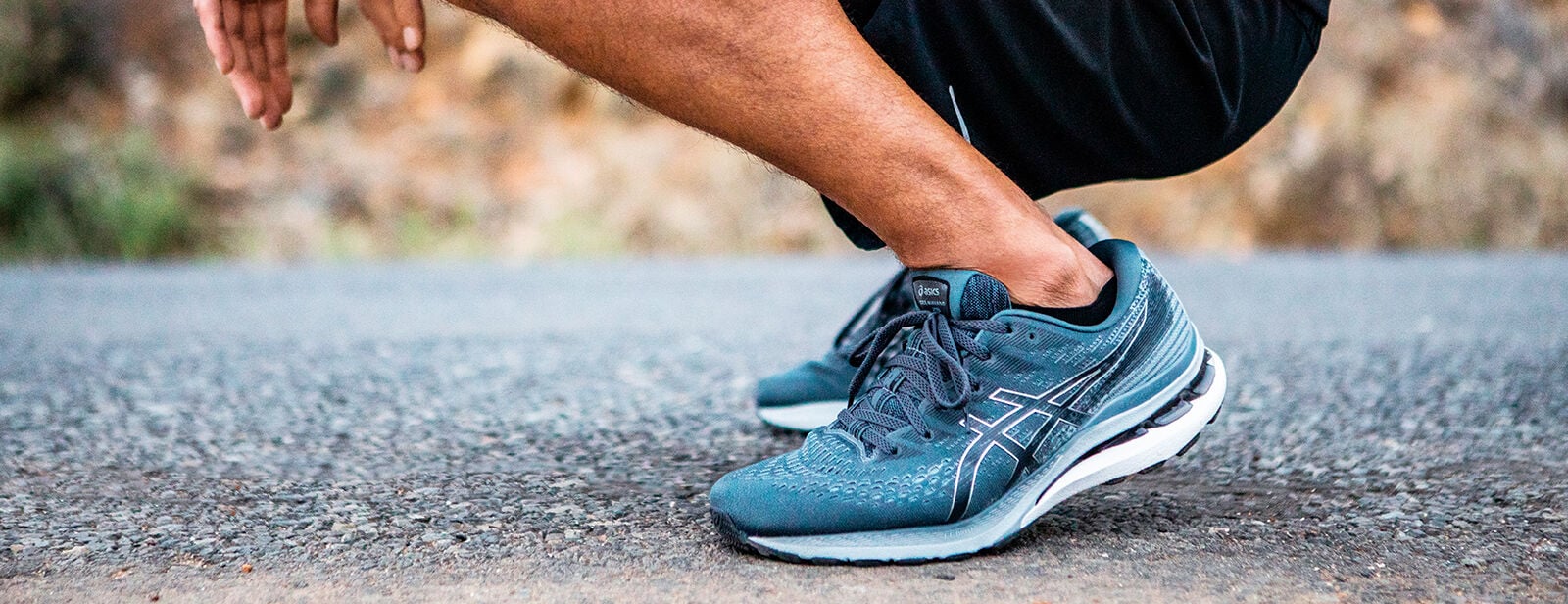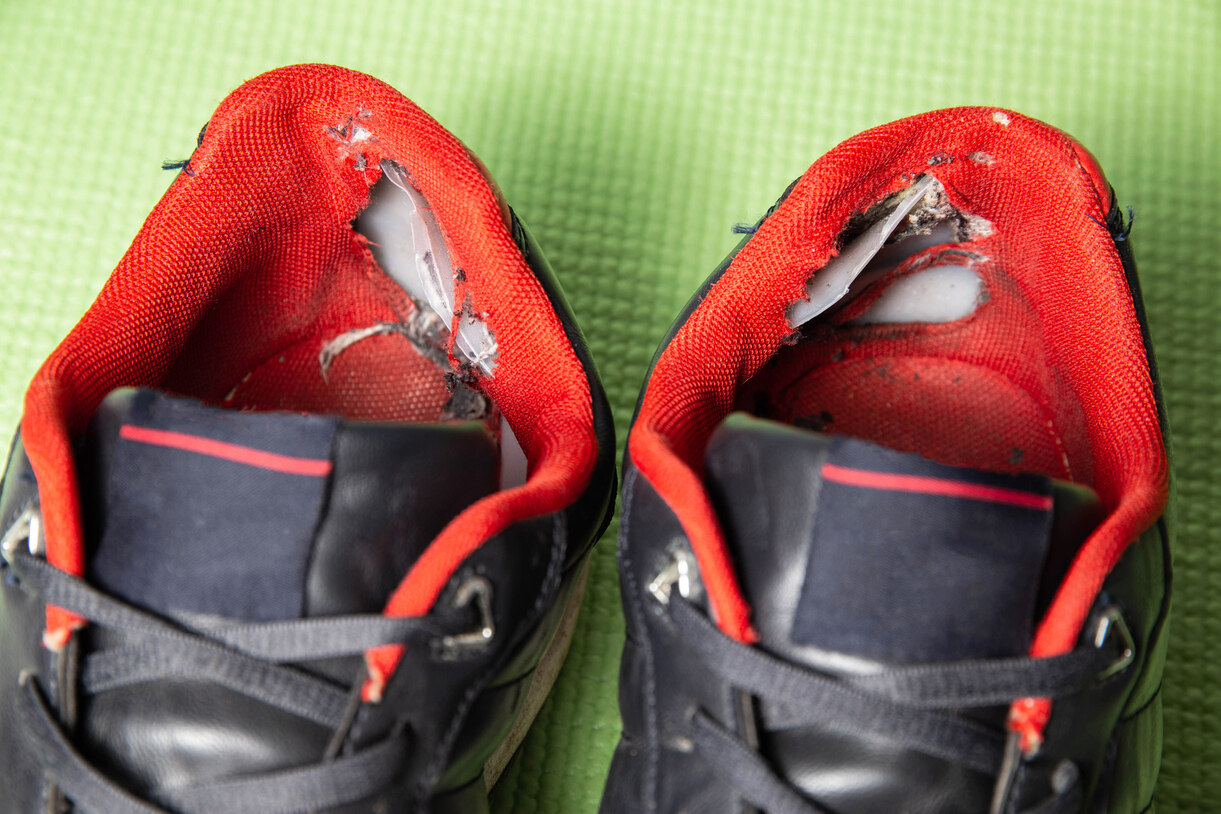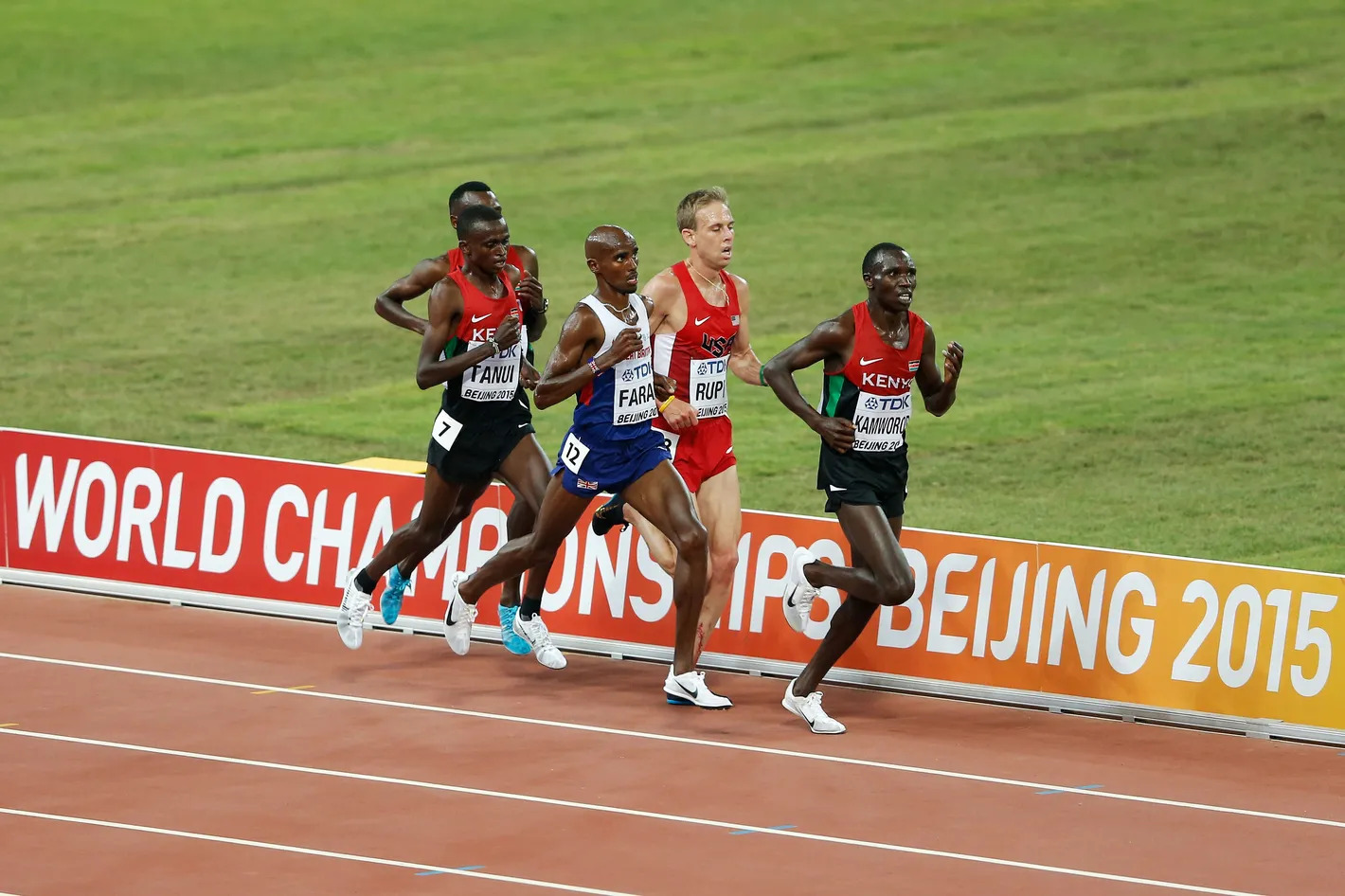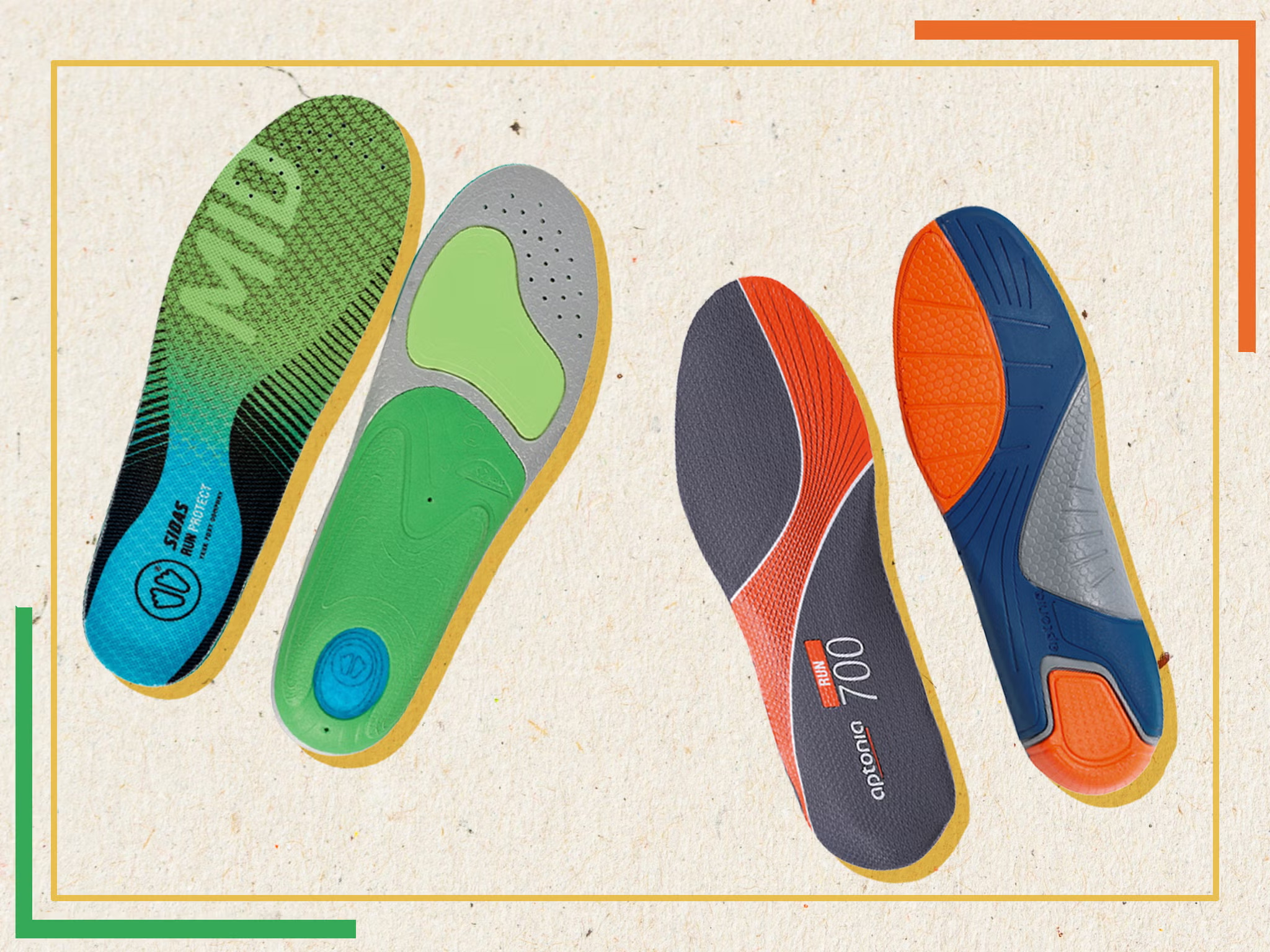Home>Misc>Featured>How To Lace Running Shoes For Plantar Fasciitis
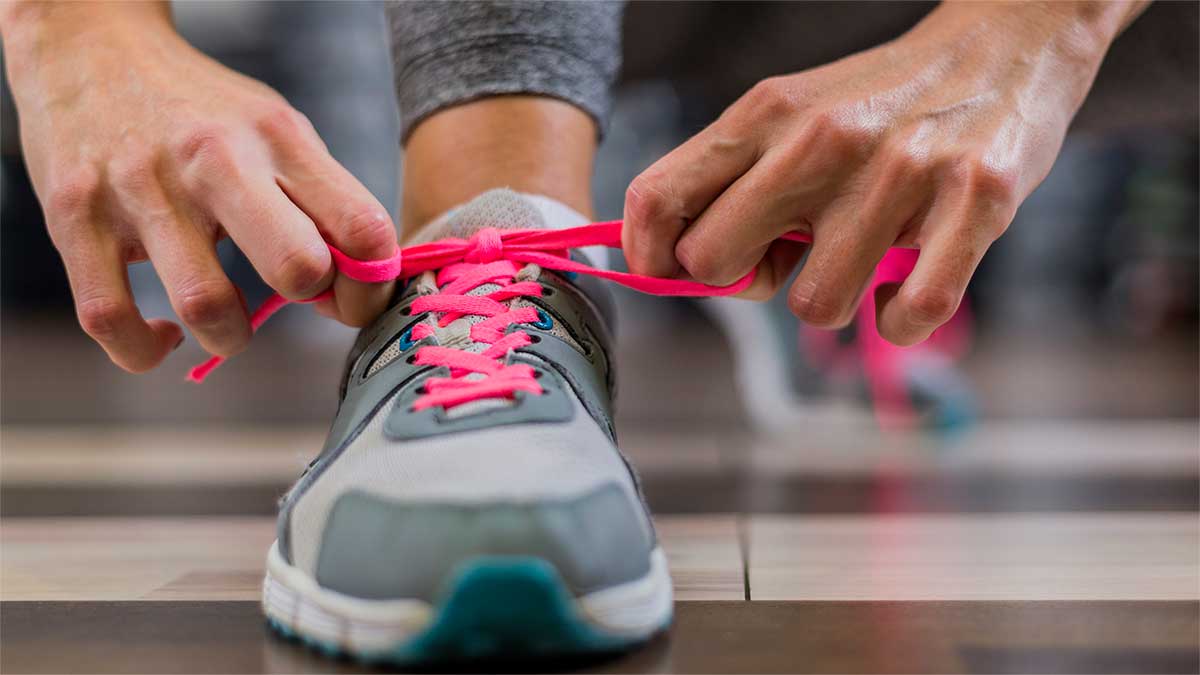

Featured
How To Lace Running Shoes For Plantar Fasciitis
Modified: January 1, 2024
Learn how to lace your running shoes properly for plantar fasciitis with our featured guide. Find the right lacing technique to alleviate pain and discomfort.
Introduction
Plantar Fasciitis is a common condition that affects the bottom of the foot. It is characterized by sharp pain in the heel or arch, especially during the first steps in the morning or after periods of rest. One of the recommended methods to alleviate the symptoms of plantar fasciitis is to wear properly-fitted footwear. However, simply selecting the right pair of running shoes may not be enough. The way you lace your shoes can also play a crucial role in providing the necessary support and comfort.
In this article, we will explore the importance of proper shoe lacing for individuals suffering from plantar fasciitis. We will also provide a step-by-step guide on how to lace running shoes specifically to help manage the symptoms of this condition. Whether you are an avid runner or someone who simply wants to find relief from plantar fasciitis pain, this article will equip you with the knowledge and techniques to ensure your shoes are laced optimally for your specific needs.
By understanding the different lacing techniques and their benefits, you can make an informed decision on the best method to effectively reduce pain and discomfort caused by plantar fasciitis. Let’s dive into the details and discover how proper shoe lacing can make a significant difference in your daily activities and overall foot health.
Understanding Plantar Fasciitis
Before we dive into the importance of proper shoe lacing for plantar fasciitis, it is crucial to have a clear understanding of what this condition entails. Plantar fasciitis is the inflammation of the plantar fascia, a thick band of tissue that runs along the bottom of the foot, connecting the heel bone to the toes.
The plantar fascia is designed to absorb shock and provide support to the arch of the foot. However, repetitive stress or overuse can lead to small tears in the fascia, causing it to become inflamed and painful. This commonly occurs when the foot’s arch is excessively strained, leading to symptoms such as sharp pain, stiffness, and tenderness in the heel or arch area.
Plantar fasciitis often affects individuals who engage in activities that put repeated stress on the feet, such as running, dancing, or standing for extended periods. Additionally, factors such as flat feet, high arches, improper footwear, obesity, and tight calf muscles can contribute to the development of this condition.
It is important to note that plantar fasciitis is a treatable condition, and with the right approach, individuals can find relief from the pain and discomfort. Alongside other forms of treatment such as stretching exercises, physical therapy, and orthotic inserts, wearing properly-fitting shoes with appropriate lacing techniques can significantly improve the management of plantar fasciitis symptoms.
Now that we have a basic understanding of plantar fasciitis, let’s explore why proper shoe lacing is crucial in providing the necessary support and comfort for individuals dealing with this condition.
Importance of Proper Shoe Lacing for Plantar Fasciitis
When it comes to managing plantar fasciitis, selecting the right shoes is only the first step. Proper shoe lacing is equally important in ensuring adequate support, stability, and comfort for individuals dealing with this condition. Here are a few key reasons why proper shoe lacing is essential for plantar fasciitis:
- Enhanced Arch Support: Plantar fasciitis often develops due to excessive strain on the arch of the foot. With the right lacing technique, you can create a customized fit that provides optimal support and reduces tension on the plantar fascia.
- Prevention of Foot Slippage: Plantar fasciitis can be exacerbated by foot slippage within the shoe, which increases friction and pressure on the plantar fascia. Utilizing specific lacing techniques can help secure the foot in the proper position, preventing unnecessary movement and reducing the risk of further irritation.
- Improved Blood Circulation: Inadequate blood circulation in the feet can contribute to the development or worsening of plantar fasciitis symptoms. By lacing your shoes correctly, you can optimize blood flow to the affected areas, aiding in the healing process and alleviating discomfort.
- Customized Fit: Every individual’s feet are unique, and what works for one person may not work for another. Properly lacing your shoes allows you to achieve a customized fit that meets your specific needs, ensuring maximum comfort and support for your feet.
By understanding the importance of proper shoe lacing for plantar fasciitis, you can take proactive steps to alleviate pain and improve your overall foot health. In the next section, we will provide a step-by-step guide on how to lace running shoes specifically for individuals dealing with plantar fasciitis.
Step-by-Step Guide: How to Lace Running Shoes for Plantar Fasciitis
When it comes to lacing your running shoes for plantar fasciitis, there are several techniques you can try to achieve the best possible support and comfort. Below, we provide a step-by-step guide on different lacing techniques that can help manage the symptoms of plantar fasciitis:
- Traditional Lacing Technique: This is the standard lacing method that most people are familiar with. Start by threading the shoelaces through the bottom eyelets of your shoes, and then crisscross them up to the top. Finally, tie a secure knot at the top. This technique provides moderate support and is suitable for individuals with mild plantar fasciitis symptoms.
- Skip Lace Technique: The skip lace technique involves skipping certain eyelets to create a customized fit. Begin by threading the laces through the bottom eyelets and skip the next set of eyelets. Continue lacing up and skip another set of eyelets. This technique provides extra support and reduces pressure on the arch, making it beneficial for individuals with more severe plantar fasciitis symptoms.
- Heel Lock Technique: The heel lock technique is ideal for individuals who experience foot slippage and heel pain. Start by threading the laces through the bottom eyelets, and then cross them over and thread them through the top eyelets for each side. Before tying the knot, cross the laces over each other and thread them back through the opposite side’s top eyelet. This creates a “lock” around the heel, providing enhanced stability and preventing slippage.
- Gap Lacing Technique: The gap lacing technique involves leaving gaps between each set of eyelets. Begin by threading the laces through the bottom eyelets, and then skip the next set of eyelets. Continue this pattern of threading and skipping until you reach the top. This technique allows for more adjustability and customization, reducing tension on the foot’s arch and relieving plantar fasciitis symptoms.
Remember, these techniques are not one-size-fits-all, and it may take some trial and error to find the technique that works best for you. Additionally, consider using laces that are longer or more elastic to accommodate the specific lacing technique you choose.
By experimenting with these different lacing methods, you can find the technique that provides the most relief for your plantar fasciitis symptoms. It’s important to note that what works for one person may not work for another, so listen to your body and adjust accordingly to find the optimal lacing technique for your comfort.
Traditional Lacing Technique
The traditional lacing technique is the most common and straightforward method to lace your running shoes. It provides moderate support and is suitable for individuals with mild plantar fasciitis symptoms. Follow these steps to use the traditional lacing technique:
- Step 1: Start by threading the shoelaces through the bottom eyelets of your running shoes. Ensure that both sides of the lace are of equal length.
- Step 2: Take the lace on the right side and cross it over to the opposite eyelet on the left side. Then, take the lace on the left side and cross it over to the opposite eyelet on the right side. Continue crisscrossing the laces up to the top eyelets.
- Step 3: Once you reach the top eyelets, make sure the laces are comfortably snug but not too tight. Avoid applying excessive pressure on the foot’s arch area.
- Step 4: Finally, tie a secure knot at the top to keep the laces in place. Make sure the knot is tight enough to prevent the laces from coming undone during your run or daily activities.
The traditional lacing technique provides a secure fit and distributes pressure evenly across the foot. However, if you experience discomfort or pain in specific areas, you may want to try alternate lacing techniques to further relieve plantar fasciitis symptoms.
Remember to adjust the tightness of the laces to find the right balance between support and comfort. It’s essential to lace your shoes snugly but not too tight, as overly tight laces can restrict blood circulation and cause discomfort.
Keep in mind that each person’s feet are different, and what works for one may not work for another. Experiment with different lacing techniques to find the one that provides the most relief for your plantar fasciitis symptoms. If you are unsure which technique to try, consult with a healthcare professional or a podiatrist for personalized advice.
Now that you are familiar with the traditional lacing technique, let’s explore another effective method to lace your running shoes for plantar fasciitis – the skip lace technique.
Skip Lace Technique
The skip lace technique is an effective method to alleviate pressure on the arch and provide extra support for individuals with plantar fasciitis. This technique involves skipping certain eyelets to create a customized fit that reduces tension on the plantar fascia. Follow these steps to use the skip lace technique:
- Step 1: Begin by threading the shoelaces through the bottom eyelets of your running shoes, ensuring that both sides of the lace are of equal length.
- Step 2: Rather than crisscrossing the laces as in traditional lacing, skip the next set of eyelets on each side of the shoe. This creates a gap between the eyelets where the lace does not pass through.
- Step 3: Continue lacing up the shoe, skipping the same set of eyelets on each side, until you reach the top eyelets.
- Step 4: Once you reach the top eyelets, adjust the tightness of the laces to ensure they are snug but not overly tight. This will provide the necessary support while allowing for proper blood circulation.
- Step 5: Finally, tie a secure knot at the top to keep the laces in place. Ensure the knot is tight enough to prevent the laces from coming undone during your run or daily activities.
The skip lace technique helps to reduce pressure on the arch by creating more room and flexibility in the shoe. It allows for a customized fit that can accommodate the specific needs and comfort level of individuals with plantar fasciitis.
It’s important to note that the skip lace technique may affect the overall tightness and stability of the shoe. Experiment with different levels of tightness to find the right balance between support and comfort. Adjust the lacing as needed to alleviate any discomfort or pressure points.
Remember that everyone’s feet are unique, and what works for one person may not work for another. Don’t be afraid to try different lacing techniques and make adjustments until you find the one that provides the most relief for your plantar fasciitis symptoms.
Now that you are familiar with the skip lace technique, let’s explore another effective method to lace your running shoes for plantar fasciitis – the heel lock technique.
Heel Lock Technique
The heel lock technique, also known as “runner’s loop,” is a lacing method that provides enhanced stability and prevents foot slippage within the shoe. This technique is particularly beneficial for individuals experiencing heel pain and foot slippage. Follow these steps to use the heel lock technique:
- Step 1: Begin by threading the shoelaces through the bottom eyelets of your running shoes, making sure that both sides of the lace are of equal length.
- Step 2: Cross the laces over each other and thread them through the next set of eyelets up the shoe, creating a basic crisscross pattern.
- Step 3: Before tying the laces at the top, take each lace and thread it through the opposite side’s top eyelet, creating a loop on each side.
- Step 4: Cross the laces over each other and thread them through the loops created in the previous step.
- Step 5: Pull the laces to tighten the loops around the top eyelets, creating a “lock” around the heel area.
- Step 6: Finally, tie a secure knot at the top to keep the laces in place. Ensure the knot is tight enough to prevent the laces from coming undone during your run or daily activities.
The heel lock technique provides additional support and prevents foot slippage, reducing friction and pressure on the plantar fascia. It also helps maintain proper alignment and stability of the foot within the shoe, minimizing the risk of further aggravating plantar fasciitis symptoms.
It’s important to adjust the tightness of the laces to find the right balance between support and comfort. Avoid overtightening the laces, as this may restrict blood circulation and cause discomfort. The heel lock technique may require some trial and error to achieve the desired level of tightness and stability.
Remember, each person’s feet are unique, and what works for one may not work for another. Feel free to experiment with different lacing techniques and make adjustments based on your comfort and symptom management needs.
Now that you are familiar with the heel lock technique, let’s explore another effective method to lace your running shoes for plantar fasciitis – the gap lacing technique.
Gap Lacing Technique
The gap lacing technique is a method that allows for more adjustability and customization in shoe lacing. This technique creates gaps between each set of eyelets, reducing tension on the foot’s arch and relieving plantar fasciitis symptoms. Follow these steps to use the gap lacing technique:
- Step 1: Begin by threading the shoelaces through the bottom eyelets of your running shoes, making sure both sides of the lace are of equal length.
- Step 2: Instead of crisscrossing the laces as in traditional lacing, thread each lace through the opposite set of eyelets, essentially skipping one set. This creates a gap between each set of eyelets that the lace does not pass through.
- Step 3: Continue lacing up the shoe, threading through every other set of eyelets, until you reach the top eyelets.
- Step 4: Adjust the tightness of the laces to ensure they are snug but not overly tight. This will provide the necessary support while allowing for proper blood circulation.
- Step 5: Tie a secure knot at the top to keep the laces in place, making sure the knot is tight enough to prevent the laces from coming undone during your run or daily activities.
The gap lacing technique allows for more adjustability and customization, reducing pressure on the foot’s arch and providing relief for individuals with plantar fasciitis. By creating gaps between each set of eyelets, you can fine-tune the fit of your shoe to accommodate any discomfort or pressure points.
It’s important to note that the gap lacing technique may affect the overall tightness and stability of the shoe. Experiment with different levels of tightness to find the right balance between support and comfort. Adjust the lacing as needed to alleviate any discomfort or pressure on the foot.
Remember that each person’s feet are unique, and what works for one may not work for another. Feel free to try different lacing techniques and make adjustments based on your comfort and symptom management needs.
Now that you are familiar with the gap lacing technique, let’s move on to some general tips to help you find the right lacing technique for your plantar fasciitis needs.
Tips for Finding the Right Lacing Technique
Finding the right lacing technique for your running shoes can greatly improve your comfort and alleviate the symptoms of plantar fasciitis. Here are some tips to help you find the best lacing technique:
- Consider your specific needs: Assess your symptoms and foot structure to determine which areas require more support or relief. This will help you choose a lacing technique that targets those specific areas.
- Experiment with different techniques: Don’t be afraid to try different lacing techniques to find the one that works best for you. Everyone’s feet are unique, and what works for one person may not work for another.
- Listen to your body: Pay attention to how your feet feel after trying out a specific lacing technique. If you experience discomfort or pain, adjust the tightness or try a different technique to alleviate the pressure points.
- Consult with a healthcare professional: If you are unsure which lacing technique to try or are experiencing persistent pain, it’s advisable to consult with a healthcare professional or a podiatrist. They can provide personalized advice and recommend the best lacing technique for your specific needs.
- Try different lace materials: Experiment with different lace materials, such as longer or more elastic laces, to accommodate specific lacing techniques. This can help optimize the fit and support provided by the chosen lacing technique.
- Adjust the tightness: Finding the right tightness is crucial in achieving the perfect balance of support and comfort. Avoid lacing your shoes too tightly, as this can restrict blood circulation and cause discomfort. Conversely, overly loose laces may not provide sufficient support.
- Regularly reassess: As your feet may change over time or as your plantar fasciitis symptoms improve, it’s important to regularly reassess your lacing technique to ensure continued comfort and support. Make adjustments as necessary to accommodate any changes in your feet.
Remember, finding the right lacing technique is a process of trial and error. Be patient and persistent, taking the time to explore different techniques until you find the one that works best for you.
Keep in mind that lacing techniques are just one aspect of managing plantar fasciitis. It’s essential to combine them with other forms of treatment such as stretching exercises, physical therapy, and proper footwear to effectively manage your symptoms.
Now that we have explored various lacing techniques and tips, you are equipped with the knowledge to make informed decisions about lacing your running shoes to address your plantar fasciitis needs.
Conclusion
Proper shoe lacing is an often-overlooked aspect of managing plantar fasciitis, but it can make a significant difference in providing support, comfort, and pain relief. By utilizing specific lacing techniques, such as the traditional lacing technique, skip lace technique, heel lock technique, and gap lacing technique, individuals with plantar fasciitis can customize the fit of their running shoes to alleviate pressure on the foot’s arch and reduce symptoms.
Understanding the importance of proper shoe lacing is crucial in effectively managing plantar fasciitis. When laced correctly, running shoes can enhance arch support, prevent foot slippage, improve blood circulation, and provide a customized fit. Every individual may respond differently to different lacing techniques, so it’s essential to experiment and find the technique that works best for you.
Remember to listen to your body and make necessary adjustments to achieve the right tightness and balance between support and comfort. If you are unsure which lacing technique to try or are experiencing persistent pain, consult with a healthcare professional or a podiatrist who can provide personalized advice.
Incorporate the tips provided and choose the lacing technique that suits your specific needs and preferences. By enhancing the fit and support of your running shoes through proper lacing, you can improve your overall foot health, reduce plantar fasciitis symptoms, and enjoy a more comfortable running or daily walking experience.
Take the time to find the right lacing technique for you and make it a part of your routine. Combined with other forms of treatment, such as stretching exercises and orthotic inserts, proper shoe lacing can help manage plantar fasciitis and keep you active and pain-free.


